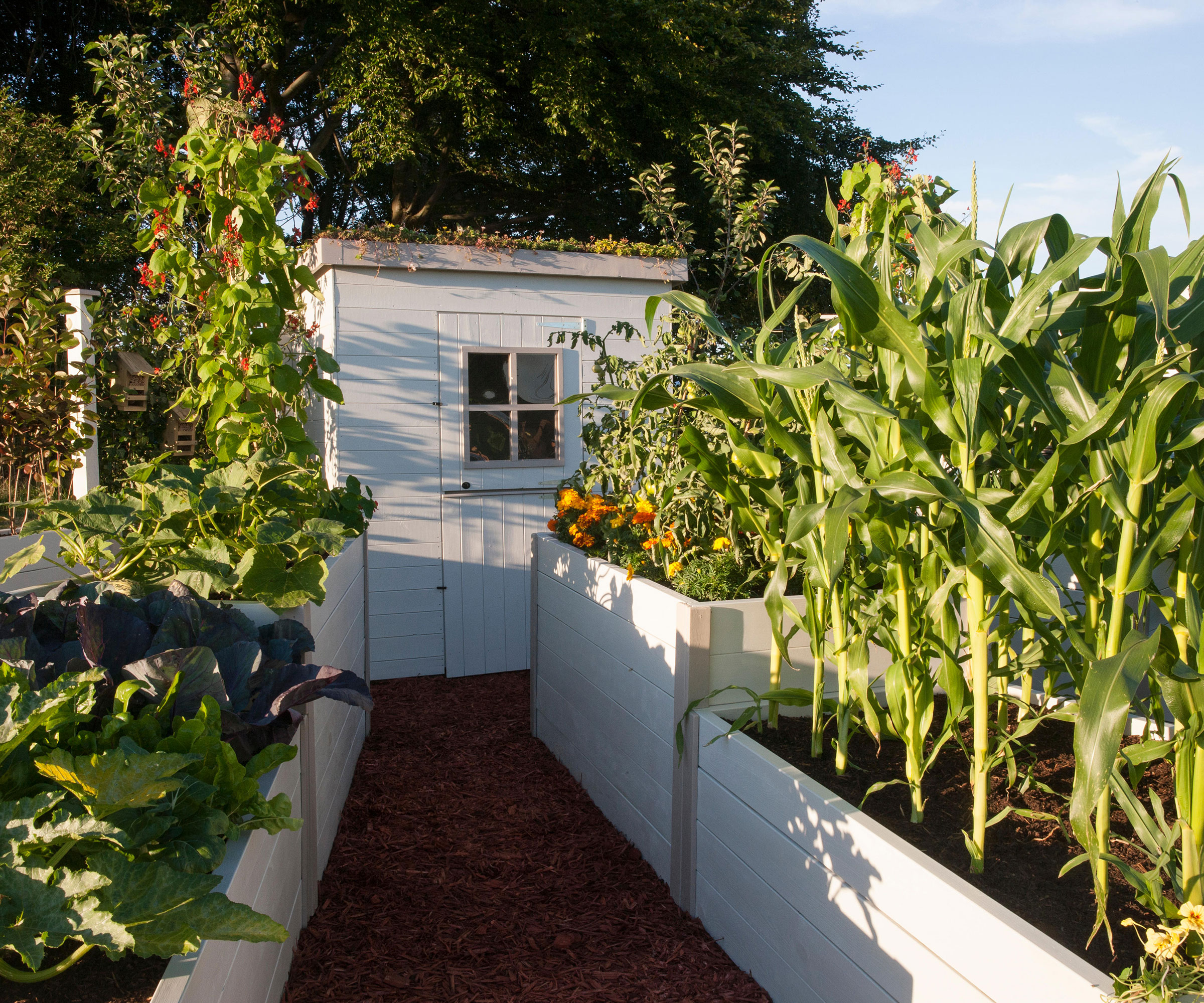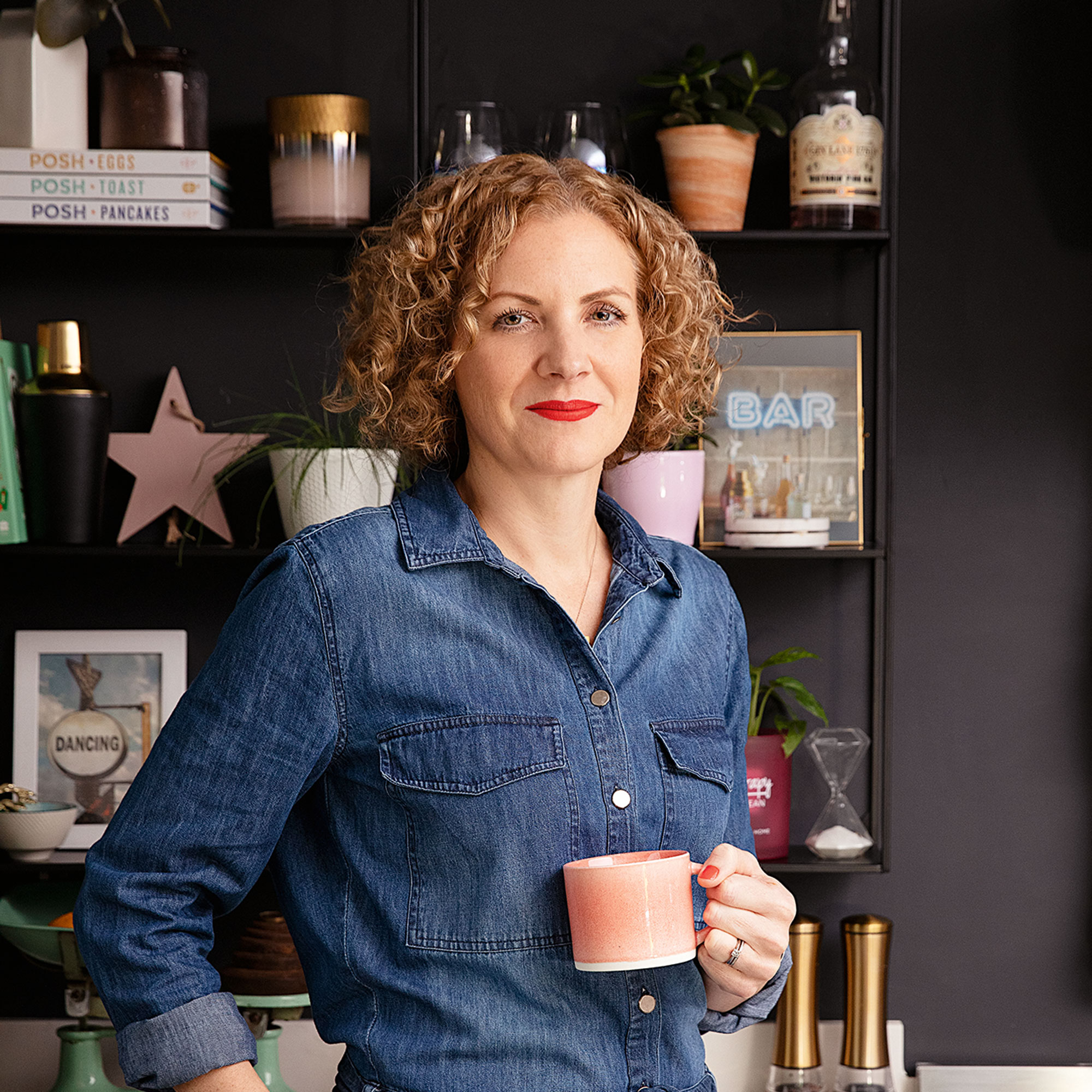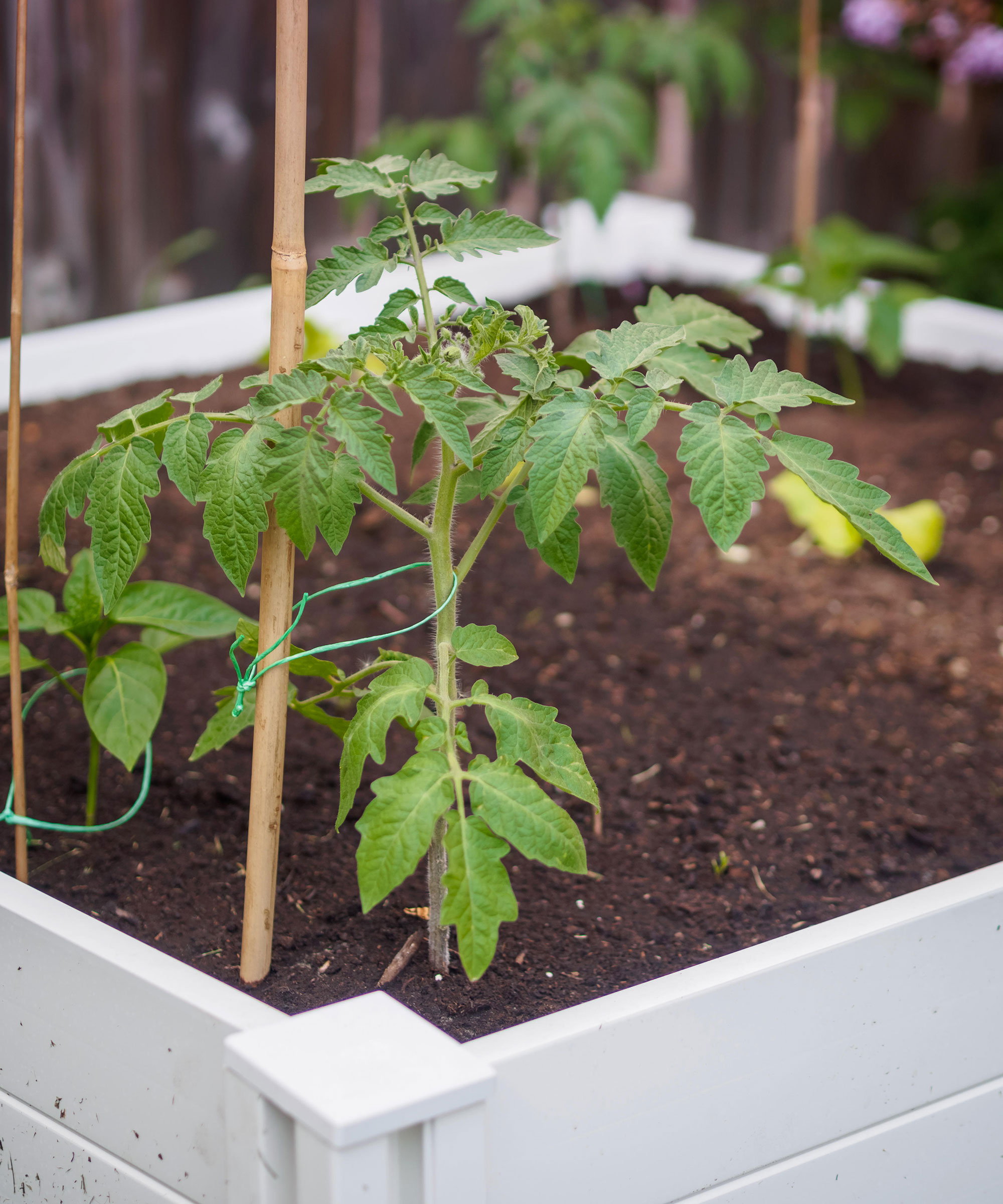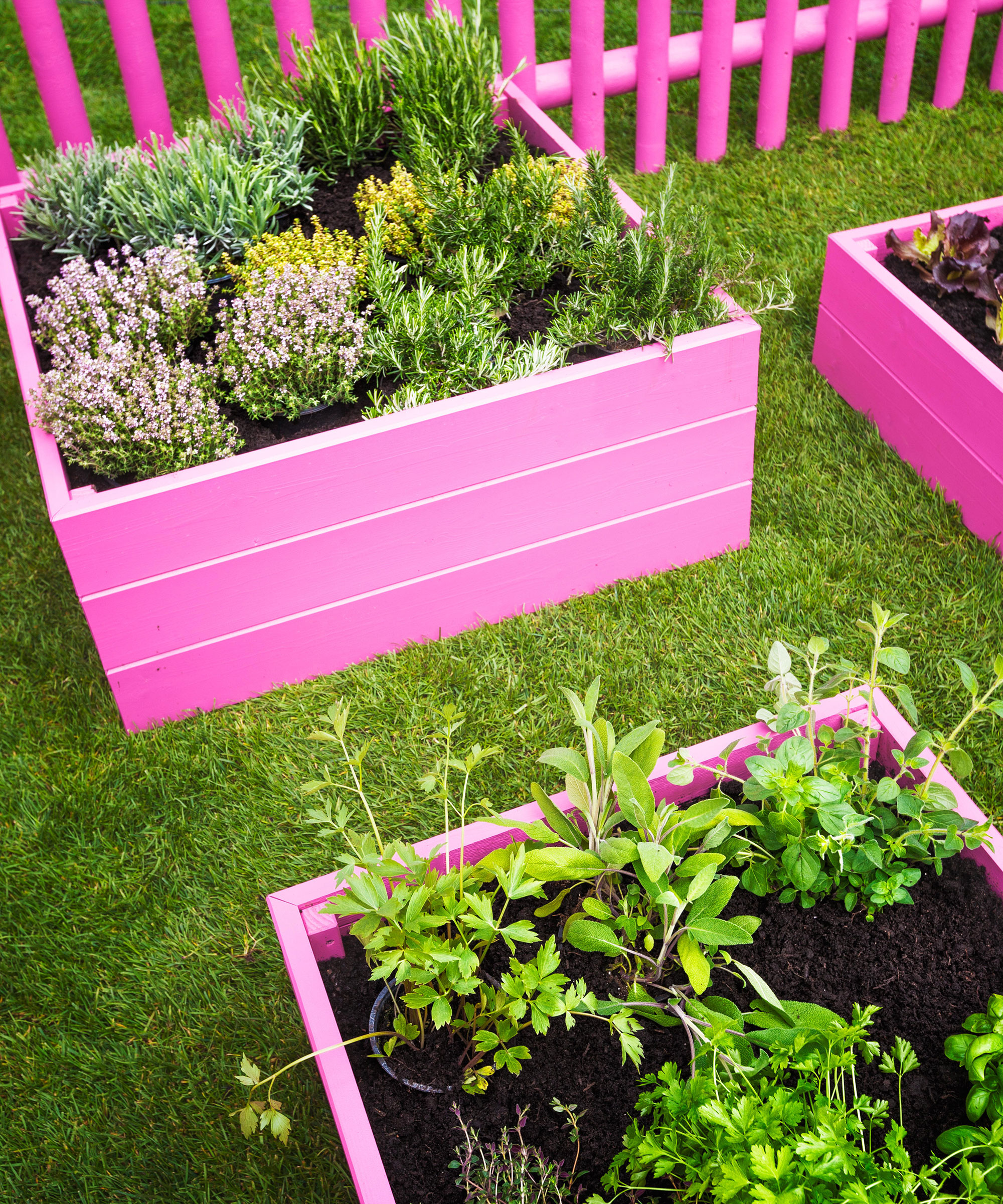Can you paint a raised garden bed? Experts reveal the pros and cons
Whether you can paint a raised garden bed depends on what you are growing and the type of paint you use – here's what you need to know


Q: I'm planning to build a couple of raised garden beds and want to paint them as I'm not keen on the color of the bare wood. Is there an issue with doing this, especially if you are growing edible crops?
A: Painting a raised garden bed might be something you've considered if you want it to blend in with the rest of your backyard scheme. If your garden is meticulously landscaped, raised beds (even if they are filled with beautiful plants) can stick out a little, especially if the timber has yet to weather with age.
Raised garden beds have dominated gardening trends for several years. They are particularly popular in edible gardens, but are also used for cut flower or standard ornamental gardens to provide height and structure. Luckily, it’s easy to paint your raised beds to better fit with the exterior of your home and the rest of your garden, or even to make them last longer. But there are some important things to consider, particularly with regards to paint choices, to ensure you do so safely.

Raised beds can be painted to blend in with other permanent structures in your yard
Can I paint a raised garden bed?
If you’re building a raised garden bed or are tired of the look of your existing ones and want to change up your backyard, you can certainly paint them. In fact, Zak Fleming, owner of Express Handyman, argues this can actually improve the longevity of your beds.
‘Painting a raised garden bed can not only improve the aesthetics of your garden but also help protect the wood from moisture, insects, and other outdoor elements.’
But before you reach for your paintbrush, there are a few vital factors to consider if you want to avoid making a raised bed gardening mistake. Using any chemicals near your plants (including paint or wood stain) requires careful consideration. This is even more important if it's edible plants that you are growing in a raised garden bed.
Your chosen paint also needs to be matched to the surface of your beds. Wooden raised beds are the most common and stain is typically more popular for these rather than paint. However, if your beds are made from brick or metal, you’ll need to find a plant-safe paint that will adhere to these surfaces without degrading.
Design expertise in your inbox – from inspiring decorating ideas and beautiful celebrity homes to practical gardening advice and shopping round-ups.
'I chose to paint my raised garden beds to protect the wood from rot and make the beds last longer,' says Beth Murton, Head of Gardens for Homes & Gardens. 'I went for a suitable outdoor paint in black so that my raised beds match the color of my fences, plus I find the foliage and flowers really stand out against the dark color. As I mainly grow edible crops in my raised beds, I only painted the exterior to ensure there were no issues with chemicals entering the soil.'
There are also some smaller tips to consider during application. Steph Rosenburg, a keen gardener who has stained several raised beds in her garden, has two takeaways from her project – always wear gloves, and use a brush rather than a roller when applying stain for an even finish.

Beth has been writing about homes and gardens for over 20 years, contributing to a number of leading magazines, including Real Homes, 4Homes, Period Living and Grand Designs. In 2020, Beth took on the role of launch Editor in Chief of Gardeningetc.com, a website dedicated to gardening and outdoor living. At the start of 2023, she moved to Homes & Gardens as the Head of Gardens, bringing her passion and knowledge for all things outdoors to our team.
Choosing the right paint
Paint or stain choice is crucial when painting raised beds. Several paint products are not safe for use around plants as they contain chemicals that can negatively impact growth – the last thing you want in your raised bed garden.
Always make sure the paint you are using is non-toxic and safe for use around plants. Even if the paint is safe, it’s best to stick to painting the exterior only, or lining the interior after painting to stop the surface from coming into contact with the roots of your plants.
Zak Fleming suggests looking for paints or stains that specifically state they are non-toxic and safe for use on wood or other surfaces that will be in contact with soil. ‘When selecting paints or stains for your raised garden bed, it's important to choose a product that is safe for plants and soil.’
‘Some suitable options for painting raised garden beds include exterior latex paint, vegetable-safe wood stain (such as this Tried & True stain from Amazon), or milk paint. You can also use linseed oil, such as this Nordicare version from Amazon, which is a natural wood treatment that is safe for plants and soil,’ he adds.

Neutral colors such as white or pale gray can soften the impact of large raised beds
Products to avoid
Several paints contain harmful chemicals that can end up in the soil around your plants. It’s important to avoid any of these paints, not only for the health of your plants, but for your own health too if your raised beds are used as a vegetable garden for edible plants.
‘It's important to avoid using any products that contain lead or other harmful chemicals that could leach into the soil and affect the health of your plants. It's always a good idea to read the product label and do your research before selecting a paint or stain for your raised garden bed,’ says Zak Fleming.
Lining a raised bed before painting
Lining a raised bed can prevent any potentially harmful chemicals from leeching into the soil and impacting plant growth. If you are using the right paints this isn’t always necessary, but is generally recommended for safety.
Landscaping fabric (available from Amazon) can be ideal for putting at the bottom of your raised garden bed as well as up the sides to create a barrier between the soil and any painted surfaces.
There are also other benefits to using a lining, like extending the longevity of your beds, that make the process worthwhile.

If you want to paint the interior and exterior of your raised bed, consider lining the interior of it first
FAQs
What color is best for painting a raised garden bed?
Once you’ve confirmed your paint is safe for use around your plants, you’ll need to pick a color. According to Chris Harvey, interior expert from Stelrad, the perfect color will be determined by your design and growing goals.
‘Neutral colors such as greys, whites, tans, and browns are usually good options as they blend in well with surrounding plants and do not distract from the garden. Alternatively, bright colors such as blues and greens can be used to create an eye-catching garden color scheme, so it really depends on what the person is after in terms of their own style.’
Darker colors will absorb more sunlight and can therefore increase the temperature of the soil, so do bear this in mind. It can be a good thing in spring when you want the soil to heat up, but in summer it can become more of an issue when there are higher temperatures.
Painting a raised garden bed can be the perfect opportunity to add a splash of color to your backyard scheme. Just like painting a fence, it can also be a practical way to protect the materials from weather damage, particularly if they are made from timber.
While choosing eco-friendly paints is always advised, for complete peace of mind, consider only painting the exterior. Alternatively, line the interior to create a barrier between the painted surface and the material you've used to fill your raised garden bed.

Madison is a garden writer and editor, covering all things outdoors and lifestyle. After completing a BA in History and Political Science, she transformed her years-long passion for plants into a career writing for both digital and print publications. As garden editor of several print titles, Madison focuses on trends and developments in the continuously expanding gardening industry. When not typing away at her desk, she tends to her ever-growing houseplant collection and travels frequently, photographing and reporting on gardens around the world.